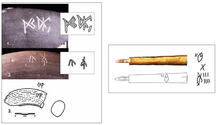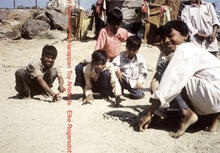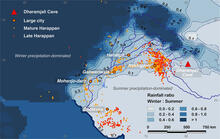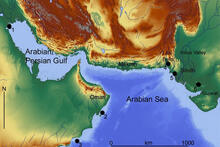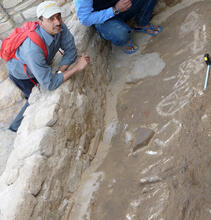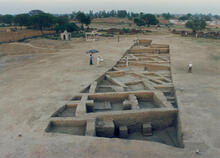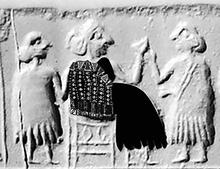A careful look at one of the least studied forms of Indus writing. "The painting of script on pottery. Painting script requires a specially prepared brush that could have been the same as that used for decorating pottery, but would have been selected to have the appropriate size and shape for the size of the script being painted."
Painted Indus Script on Ceramics and Steatite: New Insights on Indus Script Calligraphy and Function
A wide-ranging analysis of toys and their possible role in ancient Indus civilization through a close look at finds from Bagasra, Gujarat. Using social theory, microarchaeology, recent research in other civilizations, and a sophisticated approach to the question of "toys" in archaeology, the author offers one of the few deep dives into a kind of object that is found in great quantities across many ancient Indus sites.
This highly technical and scientific paper brings together all the recent evidence from Dharamjali Cave in the Himalayas over a 230 year period around 2000 BCE, when the ancient Indus civilization was in decline, to show "that repeated intensely dry periods spanned multiple generations. The record highlights the deficits in winter and summer rainfall during the urban phase of the Indus Civilization, which prompted adaptation through flexible, self- reliant, and drought-resistant agricultural strategies."
Chapter 5 from Sudeshna Guha's bestselling A History of India Through 75 Objects (2022), includes a little-known object described as a ‘measure of length’ by Ernest Mackay.
The author, who has been working in the larger region for decades exploring the long history of human habitation and industry going back tens of thousands of years, turns his attention to the geographic changes in the Indus delta region through the Bronze Age and what recent work shows us were the curious "islands" that once existed in lower Sindh (Dholavira, in Gujarat, is another example of such a later settlement).
Rao Bahadur Kashinath Narayan Dikshit (1889-1946) was at the helm of Archaeological Survey of India (ASI) as Director-General during a pivotal time in history, just as tremendous changes taking place across the globe and in his homeland. His tenure as Director-General (1937-1944) corresponded with the years preceding the war, through the war years and just prior to Independence.
A recent VOX Unexplainable podcast featuring Prof. Rajesh Rao (University of Washington, Seattle) offers a broad overview of ancient Indus script research and where we are today.
This nearly 400 page illustrated volume by Dr. Amendra Nath from 2014 covers three seasons of excavations (1997-2000), and is "drawn on the lines of the Wheeler Committee Report-1965." As the start of a record about this extensive, important major ancient Indus site, it is invaluable.
"The reconstruction of Puabi fully adorned provides insights into the fabric that lay beneath the sumptuous ornaments. The queen’s spectacular accessories, though important, have diverted our attention away from the cloth that lay beneath the eye-catching ornaments, which deteriorated (or de-materialized) long ago and so has been mostly invisible to us in the present day."
Omar Khan and Nikhil Gulati in conversation about The People of the Indus, the best-selling graphic novel about the ancient Indus civilisation shortly after its release.

